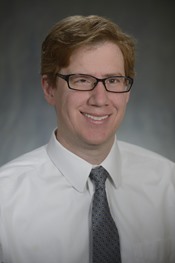BEST IN PHYSICS (THERAPY): Comparing Ultra-High Dose Rate Proton Delivery Techniques From Radiophysical, Radiochemical, and Radiobiological Perspectives
R Yang1, L Dong2, E Diffenderfer2*, (1) BC Cancer Centre for the Southern Interior, Kelowna, BC, (2) University of Pennsylvania, Philadelphia, PA
Presentations
TH-A-202-1 (Thursday, 7/14/2022) 7:30 AM - 8:30 AM [Eastern Time (GMT-4)]
Room 202
Purpose: To simulate four distinct spatial-temporal modes of proton FLASH delivery: {Ridge-Filter (RF), Range-Modulated Double-Scattering (RM), Pencil Beam Scanning (PBS), and Hybrid Pencil Beam through Ridge-Filter (PBS-RF)}, using three complementary perspectives to compare surrogate metrics of tissue sparing: {phenomenological oxygen effect, radiochemical kinetics of peroxyl radical recombination, and survival of circulating immune cells}.
Methods: Spatially equivalent spread-out-bragg-peak (SOBP) plans each comprising 11 energy layers collimated to a 5cm diameter sphere were rendered using one of four distinct spatial-temporal deliveries, calibrated to the cyclotron’s maximum beam current, while respecting slew time latencies (1.25ms between spots, 1500ms between layers). Each voxel’s resulting dose rate sequence feeds into models of (i) oxygen depletion and recovery, mediating radio-sensitization through the OER k-curve, (ii) system of radiochemistry rate equations accounting for organic radicals causing DNA damage fixation, and (iii) survival of blood-pool lymphocytes crossing the radiation field over multiple cardiac cycles.
Results: All models concur that PBS-RF maximizes tissue sparing, followed by RF, RM, and finally PBS. Despite higher localized dose rates, the long slew-times inherent to PBS (particularly between layers) allowed significant oxygen replenishment (hence sensitization), greater retention of peroxyl radicals, and reduced lymphocyte survival by exposing more of the blood-pool. Double-scattering eliminates lateral slew-time between spots; which coupled to a range modulation (RM) wheel greatly reduces latency between layers, or a ridge-filter (RF) to irradiate all depths simultaneously. Given finite beam current, a hybrid approach leveraging high spatially concentrated dose rate of PBS scanned laterally only once across a ridge-filter maximizes sparing.
Conclusion: As proton centers transition increasingly to PBS, complementary endpoint models simulating the full spatial-temporal complexity of delivery agree on unique benefits of double-scattering and ridge-filter techniques in the paradigm of ultra-high dose rate tissue sparing, most efficiently leveraged with hybrid PBS-RF.
Keywords
Taxonomy
Contact Email



